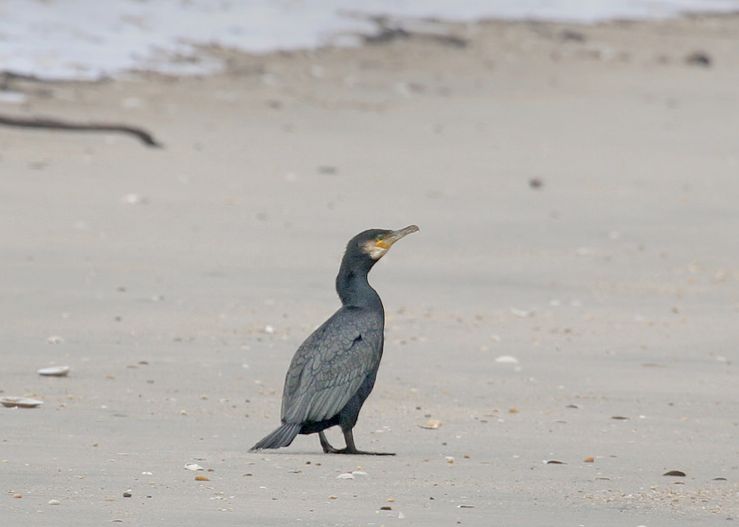
Great Cormorant, Ryan Schain
Continental Summary
Light to moderate flights earlier in the period from the southern reaches of the West featured Tundra Swan, Canvasback, Bufflehead, Bonaparte’s Gull, American Tree Sparrow, and Pine Siskin, while moderate to heavy flights last weekend and late in the current week featured Bufflehead, Hooded Merganser, Common Loon, Great Cormorant, Golden-crowned Kinglet, Snow Bunting, Fox Sparrow, and White-throated Sparrow in the East.
Curious what birds will move next? Check out our forecast.
Need a review of our definitions for regions, species on the move, and migration amounts? Please visit this link.
Quick Links to Regions
Upper Midwest and Northeast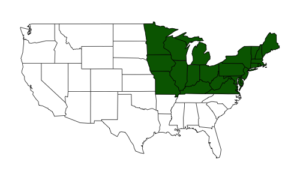 |
Gulf Coast and Southeast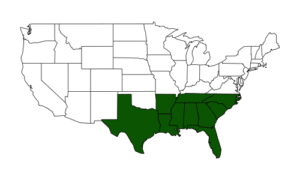 |
Great Plains |
West |
Upper Midwest and Northeast
A heavy coastal flight on Friday night was the highest density movement of the period. However, the Midwest saw moderate to heavy flights on Saturday night, as high pressure built into the Mississippi River valley. By midweek, most movement was shut down in the face of a large low pressure center moving north and west across the Ohio River valley, bringing heavy rain and otherwise unfavorable conditions for flight. Interestingly, in the wake of this system’s passage, primarily westerly and continuing southwesterly winds kept migration amounts low (in addition to the later season timing). Some more southern reaches of the region saw slightly more favorable conditions, where moderate flights occurred.
Top Movers
Increasing
| Species | Increase from Last Week | % of Checklists Reporting |
|---|---|---|
| Bufflehead | 101% | 7.6 |
| Common Goldeneye | 97% | 1.9 |
| Snow Bunting | 64% | 2.3 |
| Hooded Merganser | 43% | 5.5 |
| Common Merganser | 52% | 4.3 |
| Red-throated Loon | 60% | 2.1 |
| Thayer's Gull | 135% | 0.2 |
| Common Loon | 24% | 6.5 |
| Horned Grebe | 30% | 2.8 |
| Pine Grosbeak | 123% | 0.1 |
| Long-tailed Duck | 34% | 1.1 |
| Harlequin Duck | 99% | 0.1 |
| American Tree Sparrow | 21% | 3.9 |
| Red-breasted Merganser | 27% | 2.6 |
| Surf Scoter | 28% | 2.6 |
| Black Scoter | 22% | 2.7 |
| Bonaparte's Gull | 18% | 4.3 |
| Ring-necked Duck | 18% | 4.5 |
| Great Cormorant | 36% | 0.8 |
| Gadwall | 15% | 6.3 |
| Ross's Goose | 108% | 0.1 |
| Northern Gannet | 22% | 1.7 |
| Rough-legged Hawk | 33% | 0.4 |
| Boreal Chickadee | 113% | 0.1 |
| Purple Sandpiper | 74% | 0.1 |
Decreasing
| Species | Decrease from Last Week | % of Checklists Reporting |
|---|---|---|
| Eastern Phoebe | -72% | 3.3 |
| Ruby-crowned Kinglet | -60% | 8.7 |
| Common Yellowthroat | -88% | 0.4 |
| Eastern Towhee | -55% | 4.6 |
| Gray Catbird | -72% | 2 |
| Chipping Sparrow | -50% | 5.5 |
| White-crowned Sparrow | -51% | 5.6 |
| Palm Warbler | -57% | 3.3 |
| Lincoln's Sparrow | -66% | 1.2 |
| Blue-headed Vireo | -70% | 0.9 |
| Yellow-rumped Warbler | -42% | 18.6 |
| Hermit Thrush | -51% | 4.9 |
| Blackpoll Warbler | -79% | 0.3 |
| Swamp Sparrow | -41% | 9.5 |
| Golden-crowned Kinglet | -43% | 8.8 |
| House Wren | -95% | 0.1 |
| Field Sparrow | -47% | 4.8 |
| Nashville Warbler | -97% | 0 |
| Savannah Sparrow | -43% | 5.3 |
| Pine Warbler | -76% | 0.2 |
| Killdeer | -40% | 7.6 |
| Orange-crowned Warbler | -57% | 0.7 |
| Song Sparrow | -25% | 29.4 |
| Clay-colored Sparrow | -86% | 0.1 |
| White-rumped Sandpiper | -59% | 0.7 |
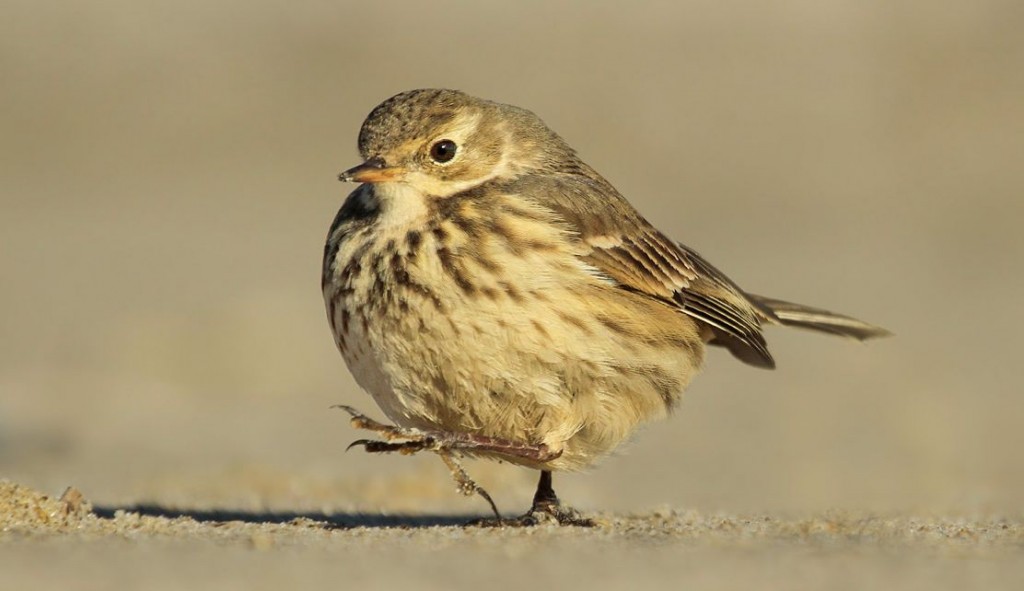
American Pipit, Ryan Schain
Gulf Coast and Southeast
A generally quiet weekend was primarily the handiwork of the approaching remnants of Hurricane Patricia combining with a low pressure center in the western Gulf of Mexico. Heavy rain kept migrants where they were for much of the first days of the period. However, with its passage, Sunday night was more extensive flights of moderate to locally heavy migration in Texas. This pattern persisted into the late days of the period, when, finally, the effects of low pressure abated. As more favorable conditions returned for birds to fly, moderate to locally heavy flights spread across more of the region. By Thursday night, flights of such intensity were widespread.
Top Movers
Increasing
| Species | Increase from Last Week | % of Checklists Reporting |
|---|---|---|
| Vesper Sparrow | 213% | 2.5 |
| Greater White-fronted Goose | 657% | 2.3 |
| Ring-necked Duck | 101% | 3.3 |
| Hermit Thrush | 74% | 4 |
| American Pipit | 133% | 1.8 |
| Savannah Sparrow | 46% | 10 |
| Gadwall | 42% | 4.8 |
| Magnificent Frigatebird | 89% | 2.1 |
| Le Conte's Sparrow | 1589% | 0.6 |
| Virginia Rail | 149% | 1.4 |
| Eastern Meadowlark | 34% | 8.2 |
| Redhead | 59% | 2.3 |
| White-throated Sparrow | 22% | 10.9 |
| Ruddy Duck | 33% | 3.9 |
| Sprague's Pipit | 566% | 0.3 |
| Fox Sparrow | 301% | 0.4 |
| White-faced Ibis | 50% | 2.8 |
| Snow Goose | 105% | 0.5 |
Decreasing
| Species | Decrease from Last Week | % of Checklists Reporting |
|---|---|---|
| Eastern Wood-Pewee | -68% | 1 |
| Wood Thrush | -89% | 0.1 |
| Swainson's Thrush | -60% | 0.6 |
| Chimney Swift | -72% | 0.4 |
| Yellow-billed Cuckoo | -77% | 0.2 |
| Gray-cheeked Thrush | -84% | 0.1 |
| Nashville Warbler | -44% | 1.1 |
| Brown Thrasher | -24% | 9.4 |
| Black-throated Green Warbler | -37% | 1.4 |
| Northern Flicker | -22% | 16.4 |
| Tennessee Warbler | -35% | 1.3 |
| American Redstart | -20% | 5.5 |
| Pine Warbler | -16% | 7.8 |
| Magnolia Warbler | -25% | 2.3 |
| Bald Eagle | -22% | 6.7 |
| Red-eyed Vireo | -47% | 0.7 |
| Cedar Waxwing | -44% | 1.1 |
| Blue Jay | -11% | 44.8 |
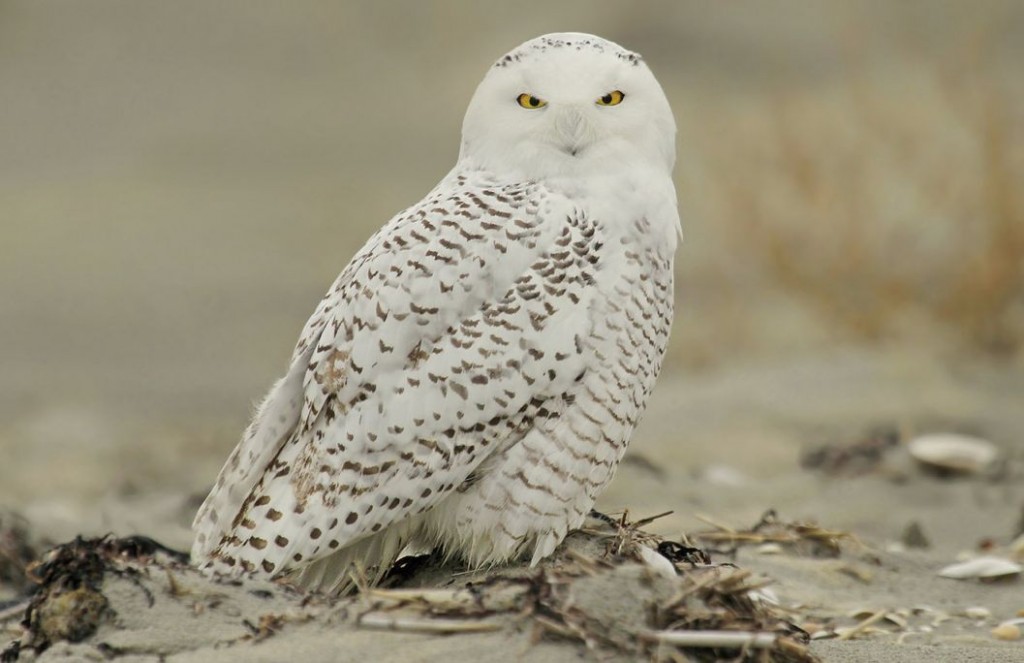
Snowy Owl, Ryan Schain
Great Plains
The Plains as a whole experienced a relatively quiet week for migration. Moderate to locally heavy flights were restricted to the central and southern Plains last weekend. Migrant densities aloft declined substantially to end the weekend, as southerly flow and approaching low pressure kept most birds grounded. Scattered light movements punctuated the central and southern Plains during the early and mid work week. These movements increased in intensity to end the period, but the extent of the flights never reached a widespread regional movement.
Top Movers
Increasing
| Species | Increase from Last Week | % of Checklists Reporting |
|---|---|---|
| Lesser Scaup | 261% | 8 |
| Common Loon | 219% | 3.3 |
| Fox Sparrow | 81% | 10.2 |
| Snow Goose | 94% | 4.9 |
| Snowy Owl | 199% | 1.1 |
| Gadwall | 34% | 19.6 |
| Ring-necked Duck | 38% | 9.7 |
| Black-capped Chickadee | 28% | 32.4 |
| White-throated Sparrow | 34% | 19.3 |
| Canvasback | 48% | 3.7 |
| Golden-crowned Kinglet | 30% | 6.5 |
| Dark-eyed Junco | 17% | 43.5 |
| Green-winged Teal | 19% | 15.8 |
| Ruddy Duck | 20% | 13.2 |
| Greater Scaup | 57% | 0.6 |
| American Wigeon | 21% | 10.9 |
| Peregrine Falcon | 46% | 1.2 |
| Blue Jay | 13% | 50.8 |
| Pine Siskin | 26% | 8.1 |
| Bonaparte's Gull | 24% | 3.8 |
| Redhead | 16% | 9.9 |
Decreasing
| Species | Decrease from Last Week | % of Checklists Reporting |
|---|---|---|
| Turkey Vulture | -66% | 4.4 |
| American Avocet | -75% | 1.7 |
| Tundra Swan | -75% | 0.4 |
| Scissor-tailed Flycatcher | -61% | 1.1 |
| American White Pelican | -45% | 6.2 |
| Blue-winged Teal | -42% | 3.5 |
| Pectoral Sandpiper | -98% | 0 |
| Snowy Egret | -89% | 0.1 |
| House Wren | -90% | 0.1 |
| Brown Thrasher | -84% | 0.2 |
| Common Grackle | -41% | 7.2 |
| Eastern Phoebe | -41% | 3.1 |
| Wood Duck | -41% | 1.9 |
| Long-billed Dowitcher | -47% | 1.8 |
| Ring-necked Pheasant | -38% | 4.5 |
| Baird's Sandpiper | -56% | 0.6 |
| Franklin's Gull | -32% | 17.4 |
| Savannah Sparrow | -35% | 10.2 |
| Clay-colored Sparrow | -47% | 1 |
| Marsh Wren | -40% | 2 |
| Great Blue Heron | -20% | 17.5 |
| Nelson's Sparrow | -49% | 0.3 |
| Sedge Wren | -42% | 1.2 |
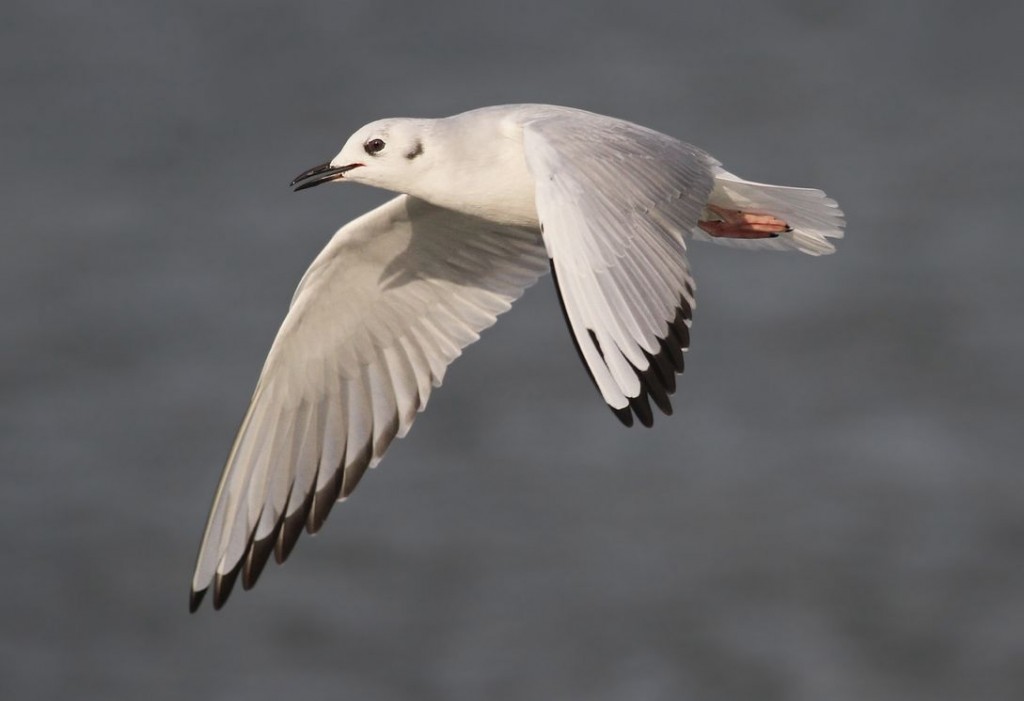
Bonaparte’s Gull, Ryan Schain
West
Scattered light movements occurred from the Central Valley south and east through the Desert Southwest to begin the period. But these movements faded by the beginning of the work week, with many areas experiencing little or no discernible movements on radar. Additionally, the days that followed saw increasingly less favorable conditions build into many areas, including the appearance of precipitation, and most migrants remained in place. The end of the week saw a return to light to isolated moderate migration in California, but little movement farther east in the region.
Top Movers
Increasing
| Species | Increase from Last Week | % of Checklists Reporting |
|---|---|---|
| Bufflehead | 48% | 9.8 |
| Canvasback | 51% | 3.1 |
| Ring-necked Duck | 31% | 9.1 |
| Lesser Scaup | 32% | 4.6 |
| Hooded Merganser | 32% | 3.8 |
| American Wigeon | 18% | 16.9 |
| Gadwall | 17% | 11.3 |
| Greater Scaup | 33% | 2.1 |
| Bonaparte's Gull | 28% | 2.6 |
| Bald Eagle | 17% | 7.2 |
| American Tree Sparrow | 44% | 1.1 |
| Common Merganser | 17% | 5.3 |
| Snow Goose | 53% | 1.3 |
| Long-tailed Duck | 46% | 0.8 |
| Pine Siskin | 12% | 13 |
| Northern Shoveler | 13% | 13.3 |
| Northern Pintail | 13% | 8.3 |
| Green-winged Teal | 13% | 11.7 |
| Tundra Swan | 65% | 0.5 |
| Grasshopper Sparrow | 79% | 0.4 |
| Mallard | 8% | 32.2 |
| Ruddy Duck | 11% | 12.2 |
Decreasing
| Species | Decrease from Last Week | % of Checklists Reporting |
|---|---|---|
| Black-throated Gray Warbler | -44% | 1.1 |
| Killdeer | -25% | 11.8 |
| Violet-green Swallow | -74% | 0.1 |
| Sandhill Crane | -25% | 1.8 |
| Yellow Warbler | -41% | 0.4 |
| Sanderling | -35% | 1 |
| Black-bellied Plover | -22% | 2.8 |
| Evening Grosbeak | -22% | 1.3 |
| Townsend's Solitaire | -19% | 2 |
| Common Grackle | -29% | 0.6 |
| Gray-crowned Rosy-Finch | -50% | 0.1 |
| Barn Swallow | -37% | 0.8 |
| Western Kingbird | -50% | 0.2 |
| Clay-colored Sparrow | -50% | 0.3 |
| Wilson's Warbler | -41% | 0.3 |
–––––––––––––––––––––––––––––––––––
Farnsworth and Van Doren




